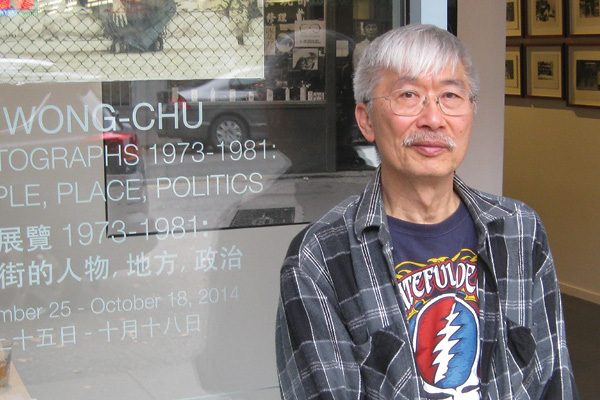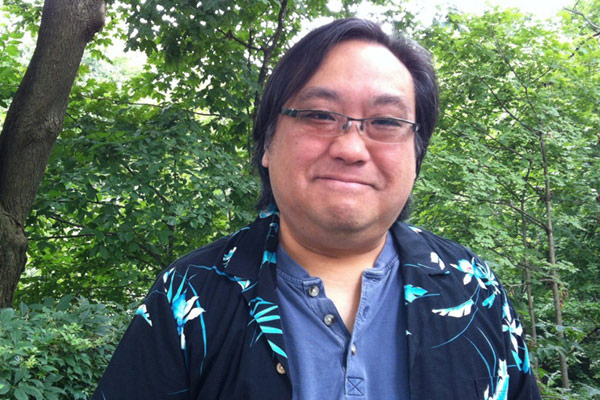By Terry Watada
Linda and Walter Ohama, sister and brother, were born and raised on a potato farm in Rainier, Alberta. Linda is an award-winning filmmaker, visual artist, educator and activist. Walt is an award-winning independent musician. The Miya family is also a family of artists: Roy, a jazz pianist extraordinaire; Sam, musician and painter; Archie, competitive ballroom dancer; Susan, supporter of the arts; and Blythe, Susan’s daughter, visual artist. Jesse Nishihata, filmmaker, encouraged his children to become filmmakers and writers. I’m sure there are many other families populated by artists of one kind or another. And I’ve only covered the Nisei and Sansei generations. Who knows how many of the next generations are artists.
This flies in the face of convention and stereotype. How many parents and grandparents have warned their offspring about the dangers of becoming an artist? Perpetual poverty is your constant companion, accompanied by a Bohemian lifestyle that ends in consumption or some vicious social disease. Unless, of course, you become famous and wealthy. Then it’s all hearts and flowers.
Precious few are those families that encourage their children either directly or by example.
I recently came across a Sansei Japanese American artist: Vale Hamanaka, aka V. Vale. As a keyboard player, he was an original member of the band Blue Cheer, before it became a power trio. The band went on to score a top twenty hit with Summertime Blues. Vale went on to be a publisher and television talk-show host in San Francisco.
He was born in 1944 at the Jerome War Relocation Center. He studied English Literature at UC Berkeley. In the 70s, he started a “zine” about SF punk culture. The publication was funded by Alan Ginsberg and Lawrence Ferlinghetti. In the next decade, he started his publishing company, RE/Search, which focuses on counterculture and underground subjects and eventually academically-modelled books.
His ambition for the press can be summed up in this quotation: (I have) “this weird theory that there’s [sic] only 1000 interesting people on this planet that I refer to as primary source thinkers. It’s my job to find them. I’m just after something that lasts longer, not ‘high sugar fluff’ as Henry Rollins put it. I want something I don’t get right away. One of my favorite phrases, and I heard this from William Burroughs, is ‘belief is the enemy of knowledge’”.
He continues today touring the country giving talks to encourage DIY (Do It Yourself) and Indie artists.
What interests me more is his family roots. His father was Kiyoshi Conrad Hamanaka, a Nisei born in Fresno CA in October 1919. As Conrad Yama, he pursued an acting career. His early appearances were in the touring companies of Teahouse of the August Moon and Auntie Mame. His Broadway debut was in Flower Drum Song as an understudy to Keye Luke (as Dr. Li). Much later, he was in Pacific Overtures.
His film credits include The King of Marvin Gardens, the Taking of Pelham One Two Three and Midway (a film that featured many of the Asian American actors working in Hollywood at the time). He can be seen as the fruit-seller during the Don Corleone shooting scene in The Godfather.
Kiyoshi Hamanaka died in March 2010.
Vale Hamanaka’s mother had an equally interesting career. Mary Hamanaka (née Takaoka) started in show-biz as a teenager as an extra in Hollywood movies. She soon convinced her two sisters (Myrtle and Midi) to form an act called the Taka Sisters. They headed to Vaudeville as a reputed risqué act, becoming nationally recognized when they were booked into Harry’s New York Cabaret in 1935.
Mary’s career ended with the murder of her middle sister the following year. The killer was Midi’s jilted lover, Raymond Johnson. Johnson first stabbed the other man in the triangle before victimizing Midi. He spent the rest of his life in jail. The murder was widely publicized and probably used as a warning against interracial relations.
Mary Takaoka died in 1991.
Despite the somewhat unsavory, certainly sensational, details of the Hamanaka family, I do not believe their experience is a cautionary tale against the life of an artist. Rather, it is the pursuit of their art that has informed and enriched their lives. And though, I’m sure, they are not as celebrated as they would have liked to have been, they have gone beyond the conventional and led satisfying and interesting lives.
So if your son or daughter wants to be an artist of some kind, encourage them, support them, celebrate them and, most important of all, be there for them. And don’t undercut them as my 18-years-older brother said to me when I wanted to take up the guitar, “You might make some friends at university.” Maybe this column is a cautionary tale.


